Our Blog - Colmar, France
Near Strasbourg are several other small towns that have their own Christmas Markets, and Colmar is always included in the lists of the best Christmas markets. It also has some great architecture since it was mostly spared from destruction during the various wars. It is a short train ride from Strasbourg, and we took the opportunity to head there on Thursday, since the Christmas Market in Strasbourg was still closed from the attack that has taken place on Tuesday.
We stopped by the Tourist Office and got a map, which includes the Tourist Trail. On the ground, there are these little directional icons that point you in the right direction, taking you through 40 different sights if you do the whole thing. On the map, as well as at each sight, there is additional information in French, English, and German.

We started our walk near the Unterlinden Museum (which we didn't go into), which is housed in a 13th-century Dominican religious sisters' convent.

The Maison des Têtes (House of the Heads) was built in 1609 for a town merchant, who eventually became Mayor in 1626. The facade has a large number of masks and grimacing faces. It has a large bay window that spans 3 levels, which has quite a bit of carved decoration. At the very top is a state of a barrel maker, which was added in 1902 when the building was used as the Colmar Wine Exchange.



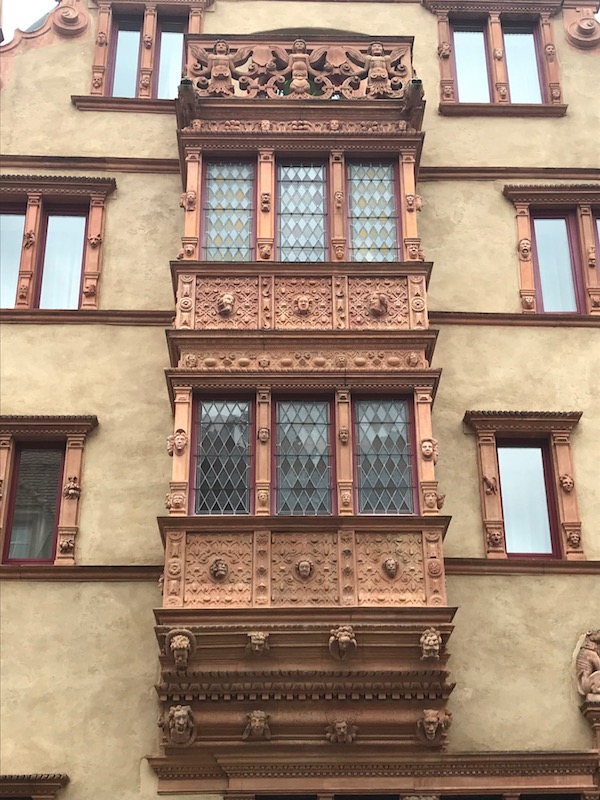

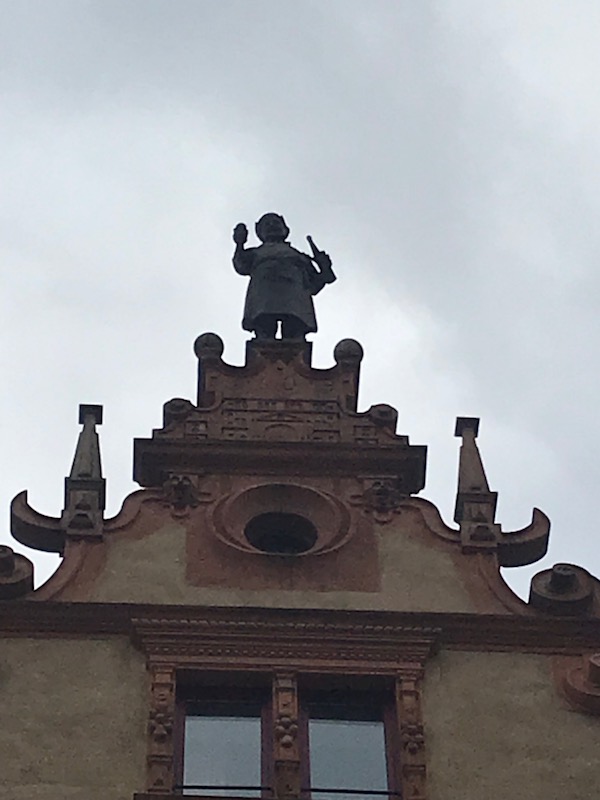
There were lots of Christmas decorations within the town, including This old well near the Dominican church from 1584 (as inscribed on the top although somewhat difficult to read) with its Christmas tree.

And bears, bears, and more bears!


In 1277, the Dominicans came to Colmar and began construction of the Church of the Dominicans. The first stone was laid in 1283 and it was completed in the first part of the 14th century. It is a simple nave church but it has really, really, high ceilings. The choir stalls have nice wood carvings interlaced with circular portraits. I got a close-up of the carvings but it makes it look white (sorry).


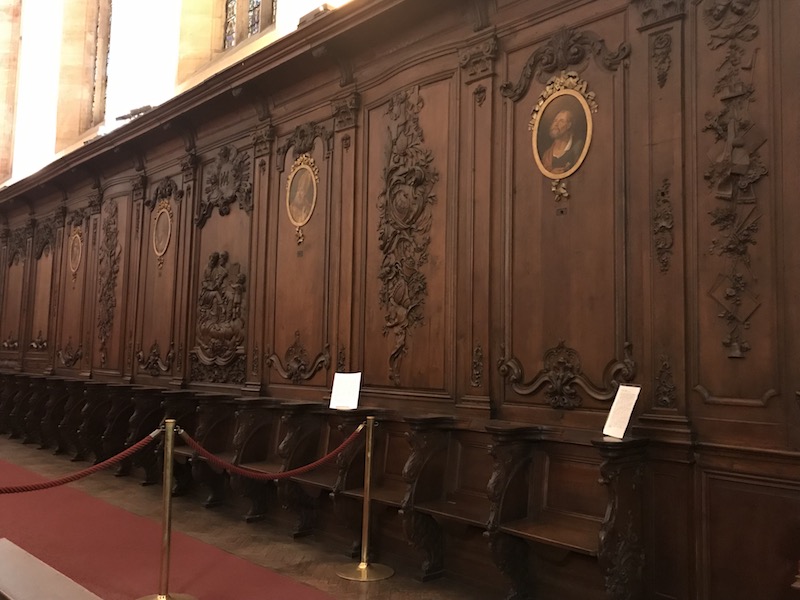

The Madonna of the Rose Bower was done in 1473, shows the Virgin and Child seated on a bench in an enclosed garden.


The 14th century stained glass windows have survived, which was really amazing. But they were not always here ... In 1807, the church was converted to a granary and the windows taken down and stored in a different church. They were restored and repositioned in the choir and nave between 1920 and 1927. They depict various themes, from the 12 apostles, to scenes from the life of Christ, to deeds of the Dominican friars, and stories from the Old and New Testaments.



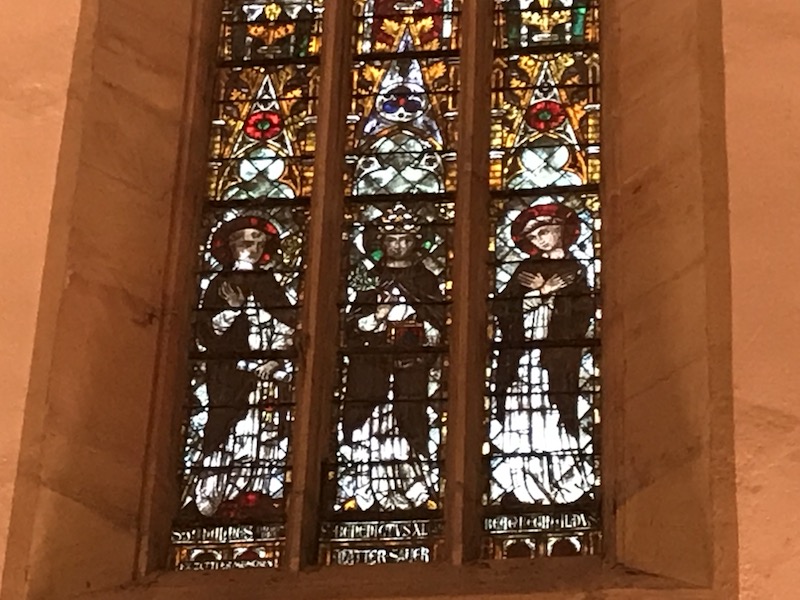
Throughout the town, you can see these traditional-style half-timbered houses.





We peeked in at the Cour du Weinhof, which dates back to the 14th century and is a former medieval granary. If you want, you can stay here as it is now a Bed & Breakfast (in French, a Chambre d'hotes).

The Pfister House is probably the most famous house in Colmar, built in 1537 for a wealthy hatter. It is named for the merchant François Jean Pfister, who purchased it in 1841. It is built of both sandstone and wood, and has a two-story corner bow-window and turret. The facade contains various paintings including medallions of Germanic emperors, the Four Evangelists, the fathers of the Western Church, scenes from Genesis, and allegorical figures such as Faith and Justice.
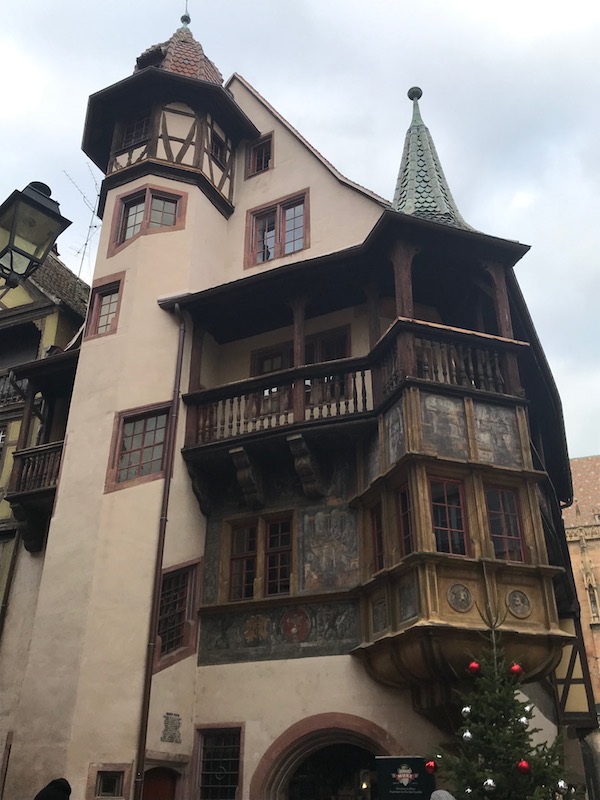


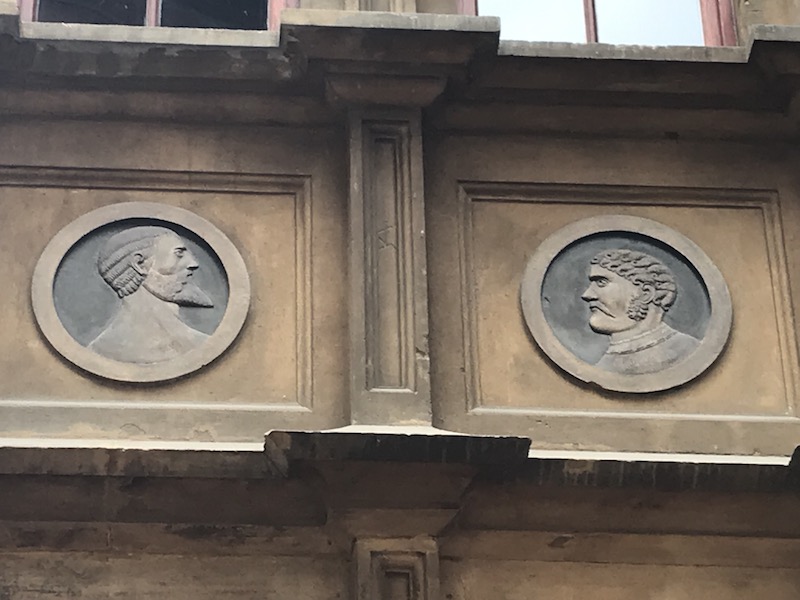
The Maison Adolph is considered to be one of the oldest houses in Colmar, dating back to the 14th century. The Gothic-style windows were added in the 19th century.

Now housing a "2 euros" store, the Poele des Laboureurs, was a meeting place of the former corporation of farmers, which was one of the largest in old Colmar. It was built in 1626 and has a remarkable Renaissance door frame.

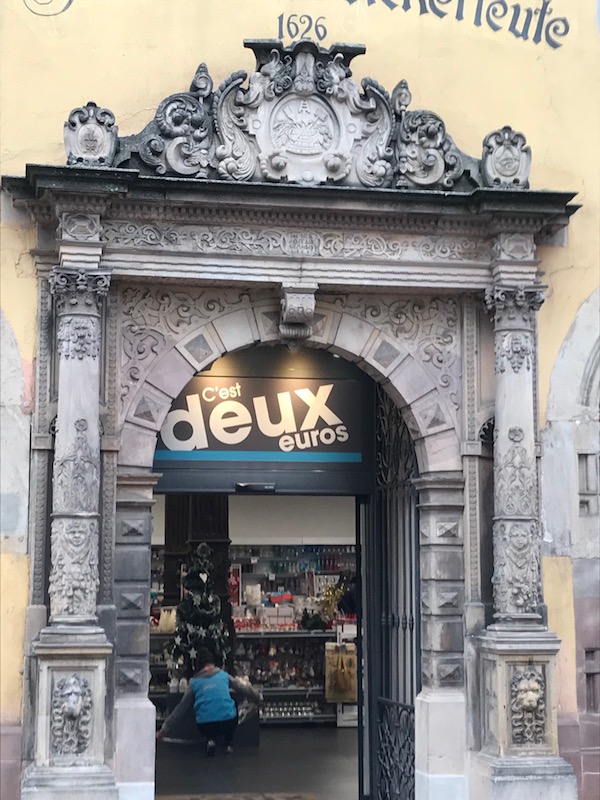

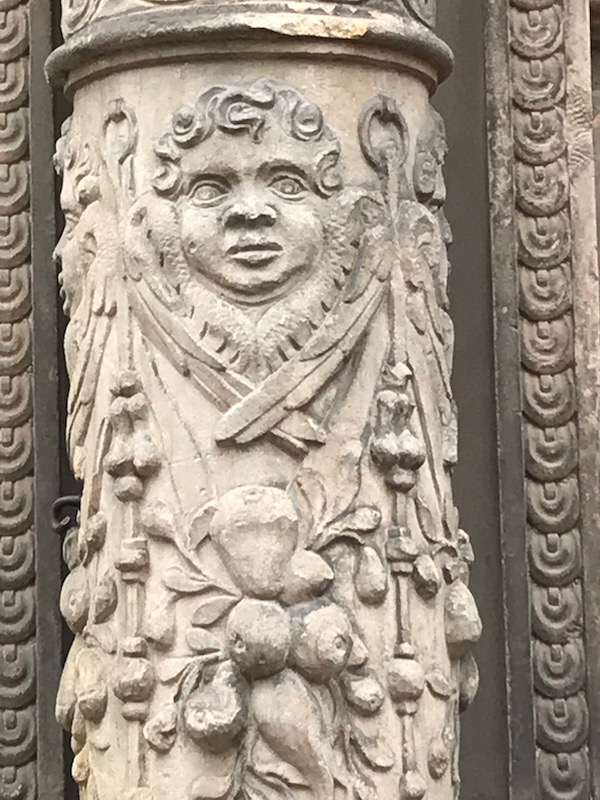
The Quartier des Tanneurs is an area in the old tan that was where tanners would dry the animals skins. It has tall, timber-framed houses that were built during the 17th and 18th centuries.

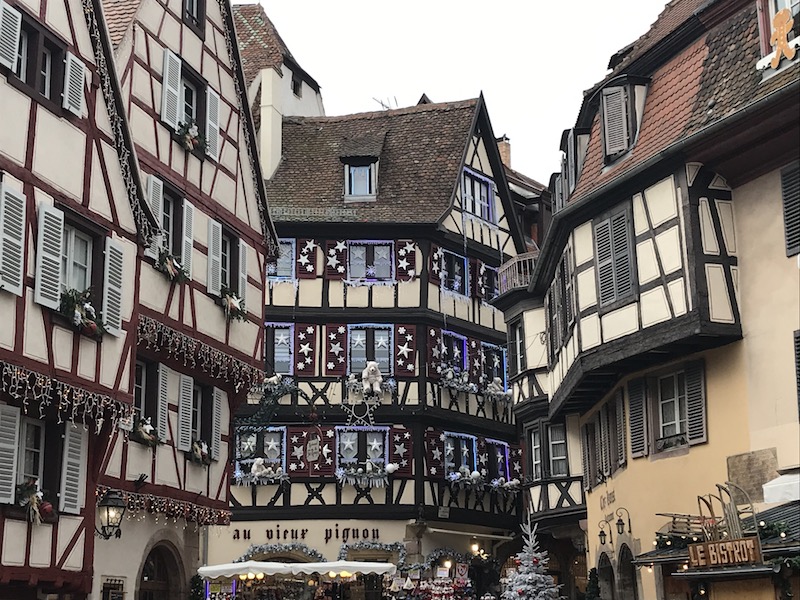
Built in 1865, the covered market is a work of the architect Louis-Michel Boltz, architected with brick and stone.

This church, the Collegiate Church of Saint-Martin, was built in 1235 and is one of the most imposing Gothic churches in this area. The Saint Nicolas doorway, which is on the South side, has a really impressive tympanum.
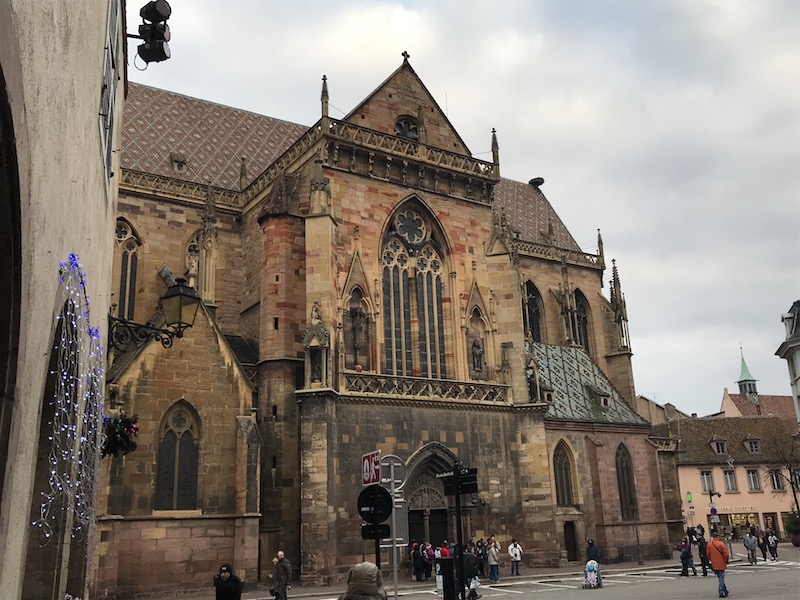



It has some really nice stained-glass windows as well as a representation of the Last Supper.



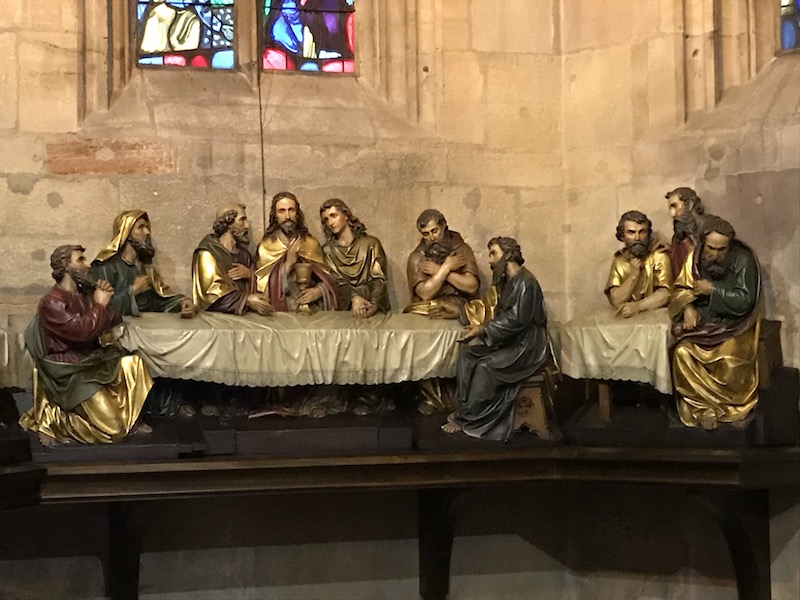
There is a set of statues showing the Saints of Alsace in the North transept of the church, which used to be part of the main altar of the church. These include (in order), Saint Arbogast (bishop of Strasbourg in the second half of the 7th century), then Saint Fidele, Saint Pirmin, Sainte Odile, and Saint Richarde together, and finallty Saint Leon IX, Saint Morand, and Saint Materne.
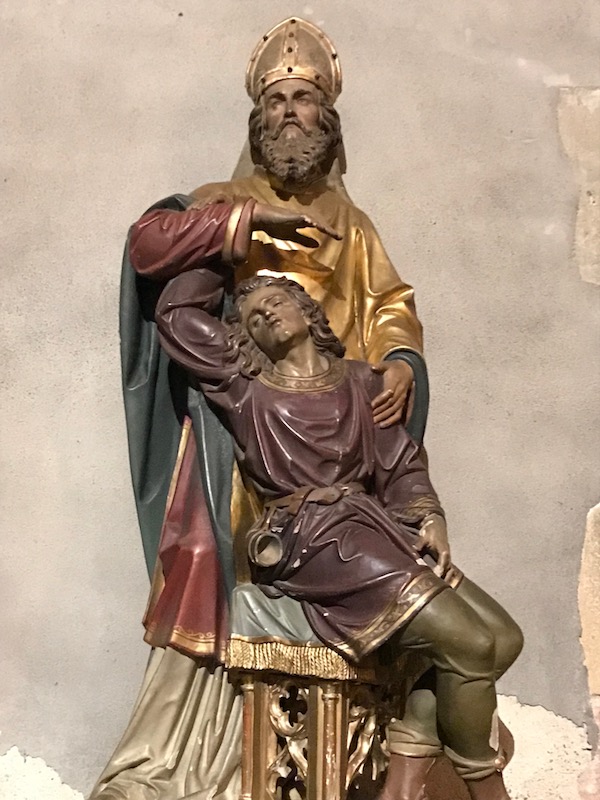


This is an altarpiece from the end of the 19th century in a neo-Gothic style.
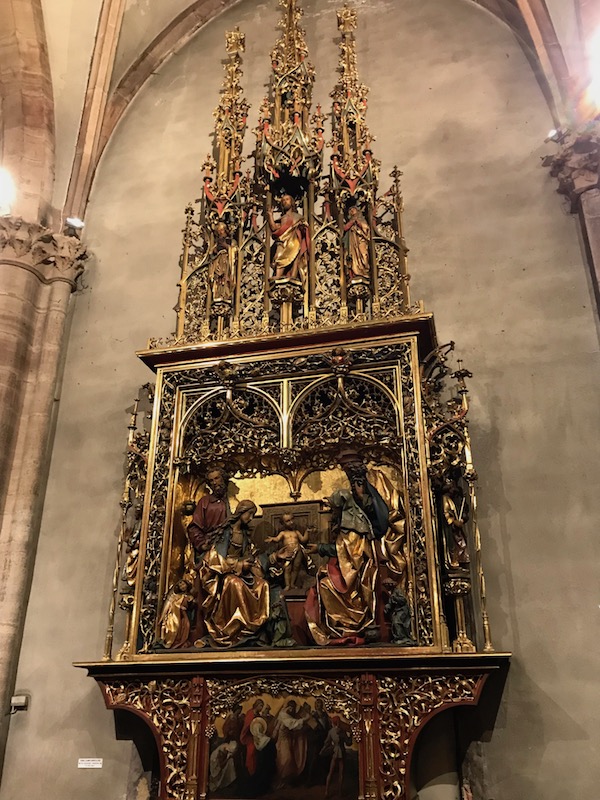

And what would a Christmas Market be without a petting zoo ... here Tom is making friends with one of the goats.
